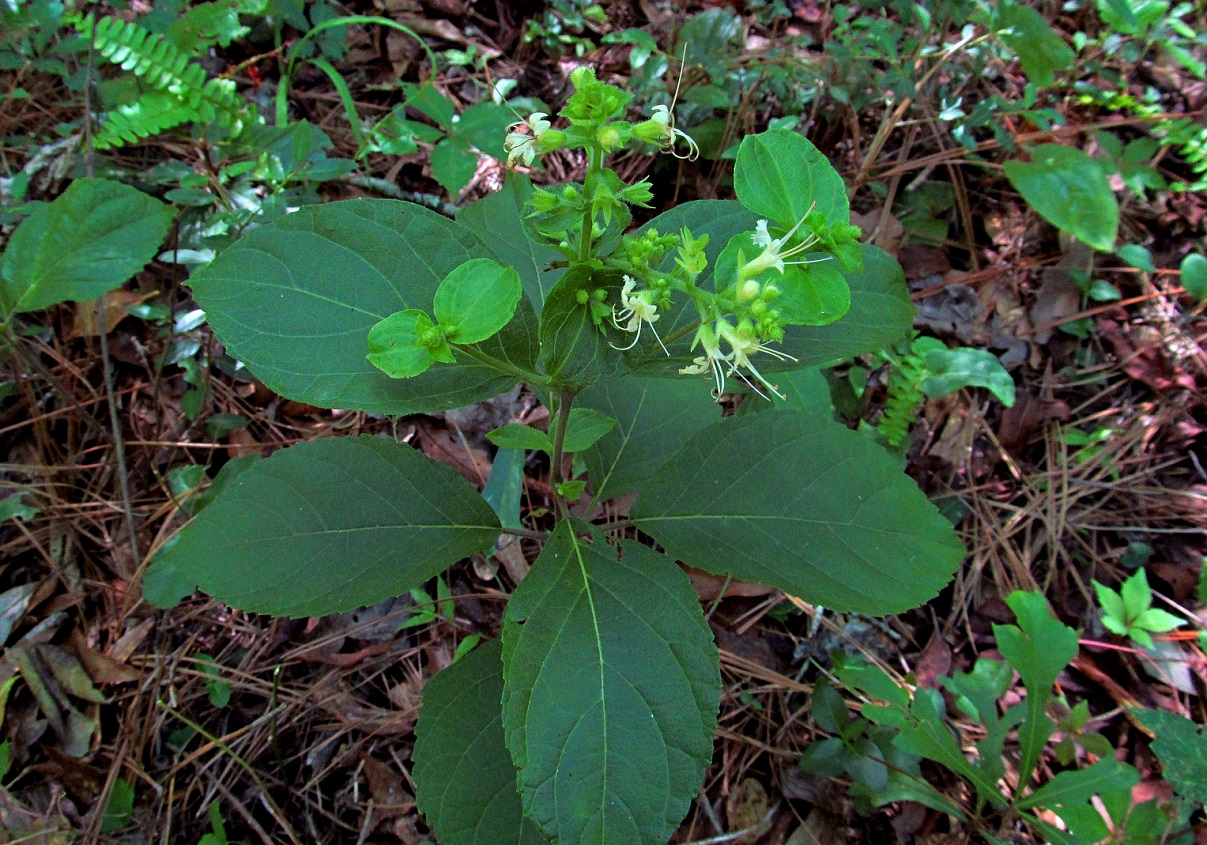Collinsonia anisata
| Collinsonia anisata | |
|---|---|

| |
| Photo by the Altas of Alabama Plants Database | |
| Scientific classification | |
| Kingdom: | Plantae |
| Division: | Magnoliophyta - Flowering plants |
| Class: | Magnoliopsida - Dicots |
| Order: | Lamiales |
| Family: | Lamiaceae |
| Genus: | Collinsonia |
| Species: | C. anista |
| Binomial name | |
| Collinsonia anisata Walter | |

| |
| Natural range of Collinsonia anisata from Weakly [1] | |
Common Names: southern horsebalm; anise horsebalm[2]
Contents
Taxonomic Notes
Synonyms: C. canadensis var. punctata; C. punctata[2]
Description
Collinsonia anisata almost identical to C. punctata except for scent of aniseed and the number of stamen (four).[3][4] A South Carolina specimen from 1806 was described as having erect, lightly hairy stems of 2-3 ft high. Leaves are petioled, cordate to ovate, acuminate, crenate-dentate, pale underneath, and covered with pellucid dots. Inflorescence contain compound terminal racemus with simpler axillary ones. Seeds are globular.[3]
Distribution
This species occurs from central Georgia, southwest to the Florida panhandle, and westward to southern Mississippi.[2]
Ecology
Habitat
C. anisata is found in rich forests.[2]
Phenology
In the southeastern and mid-Atlantic United States, C. anisata flowers from late July through September and fruits from September through October.[2]
Conservation and Management
Cultivation and restoration
Photo Gallery
References and notes
- ↑ Weakley, Alan S. 2015. Flora of the Southern and Mid-Atlantic States: Working Draft of 21 May 2015. University of North Carolina, Chapel Hill, North Carolina. 1320 pp.
- ↑ 2.0 2.1 2.2 2.3 2.4 Weakley AS (2015) Flora of the Southern and Mid-Atlantic States. Chapel Hill, NC: University of North Carolina Herbarium.
- ↑ 3.0 3.1 Sims J (1809) Collinsonia anisata Curtis's Botanical Magazine 30:t.1213.
- ↑ Ward DB (2014) Thomas Walter typification project, VII: Observations on the genus Collinsonia (Labiatae) and a neotype for C. serotina Walter. Phytoneuron 89:1-5.